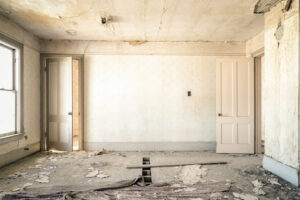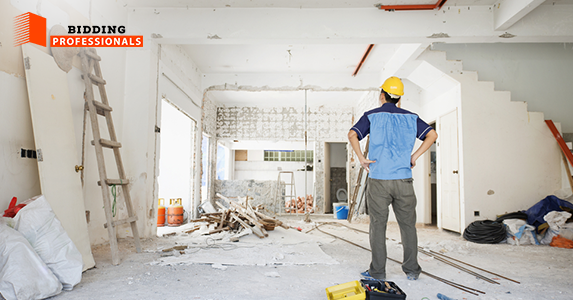Whether you’re buying a new house or are starting the thrilling path of renovations, understanding the delicate balance of cost estimation is crucial. This information functions as the compass that directs your financial choices, ensuring that each investment is in harmony with the intended remodel of your home. A solid grasp of cost estimates helps you evaluate the entire investment when purchasing a house, considering both the original purchase price and any necessary remodeling expenditures. Similarly, when starting a renovation project, a careful cost-estimating budget is the foundation for effective planning, assisting you in making resource allocation decisions and avoiding unanticipated financial hazards. The ability to estimate costs sensibly comes into play in both situations, enabling you to make well-informed decisions.
Your home becomes your dream place. Thinking about how your home could be transformed into a unique paradise that inspires creativity and excitement is stimulating. Nonetheless, the difficulty of predicting home renovations—a field where accuracy and anticipation become crucial—is sewn deeply into the fabric of this thrill. Here, you must carefully balance your property’s monetary outlays and expected appreciation.
This blog delves into the intricate world of remodeling project estimating. It’s a quest that entails solving the puzzles hidden behind financial restrictions and investment. Think of this as a roadmap, a compass that leads you through the unknown territory of remodeling expenses and value addition. We will explore the depths of this revolutionary process together, equipping you with the information and understanding required to negotiate the complex world of home renovation estimating successfully.
Understanding the Foundations
Starting a home renovation project is like giving old spaces a new life and transforming them into modern havens that capture your unique tastes and preferences. However, precise estimation is a critical component that makes a project successful or unsuccessful. This fundamental component serves as the renovation process’s equivalent of the bedrock. Even the best-intentioned projects risk going out of control without a clear awareness of the expenses involved, which could result in unpleasant financial surprises and losses.
Precise estimating directs your renovation journey. It entails thoroughly assessing all possible costs, including labor and material costs and unanticipated fees and licenses. This proactive strategy guarantees that every dollar invested significantly contributes to improving your living space while reducing the possibility of budgetary overruns.
THE ABC OF HOME RENOVATION BUDGETING
Assessing Your Needs and Wants
Starting a home renovation is a thorough process that begins with carefully assessing your needs and preferences. It’s not simply about envisioning final results. Before diving into the world of budgetary computations, intentionally pause to thoroughly evaluate what your living area needs and what you want to accomplish within its boundaries. This reflective moment is similar to preparing for a play, where every piece is essential to the overall production of your dream house.
Separating your renovation needs from wants is more than just a proper exercise; it’s a calculated move that allows you to set sensible priorities. Determine which upgrades are necessary to fulfill structural and functional criteria. These will serve as the cornerstone of your restoration projects. At the same time, identify the dream-inspired details that will take your room from ordinary to spectacular.
During the evaluation phase, you can reflect on and balance the practicalities of your budget with your remodeling goal. This is the moment for the contemplative curator, one who makes decisions. Differentiating between needs and wants helps you build a budget representing your objectives and guarantee that resources are allocated wisely. This thoughtful preamble essentially sets the stage for a renovation that is both aesthetically pleasant and firmly rooted in practicality and purpose.
Building a Realistic Budget
A well-executed home remodeling starts with generating a realistic budget, like creating a precise layout before beginning a building job. This crucial stage entails more than allocating budgets for supplies, labor, and permits; it’s a complex undertaking requiring a deep comprehension of the various layers that make up a successful remodeling project.
Start your financial journey by carefully tracking every expense related to your project. Divide expenses into groups, including supplies, expert labor, licenses, and any unanticipated circumstances. Consider your budget as a thorough map, with each line item acting as a road sign to help you navigate the complexities of your remodeling project.
Make use of contemporary resources to increase the accuracy of your budget. Construction takeoff companies created especially for budgeting are helpful as they offer dynamic platforms for entering and analyzing different expense components. Ask for contractor quotations to learn more about labor and material costs unique to your project. Make use of detailed information provided by industry professionals as well. They may offer insightful guidance on how to allocate your budget depending on the size and objectives of your renovation.
Considering the Resale Value
Personal goals are typically the focal point of the complex home renovation process. Still, one crucial factor that’s sometimes disregarded is your property’s possible resale value. Rather than being seen as a compromise, this gives the remodeling story a new strategic angle. Your project can become profitable if you balance your tastes and your knowledge of your home’s market value.
Consider this project with two purposes: Every choice you make influences both the overall desirability of your property in the real estate market and the aesthetic you have in mind.

TIPS FOR ENHANCING VALUE
DIY vs. Professional Services
Compare the viability of hiring a professional versus doing projects yourself. Although do-it-yourself projects might save money, specific tasks require expertise to guarantee quality and safety regulations.
Renovations to kitchens and bathrooms
The most significant return on investment is often observed in these areas. Look for low-cost solutions to improve these areas without sacrificing aesthetics or usefulness.
Energy-Saving Improvements
Enhancing your property with energy-efficient features lowers long-term costs and raises its value. Discover the newest innovations and technology for your house.
Conclusion
Starting a home improvement project may be an exciting journey, and you can turn your vision into reality while controlling costs if you have the correct information and resources. Finding a balance between your spending limit and the value that your home adds can improve your living area and prove to be a prudent investment in your property.

